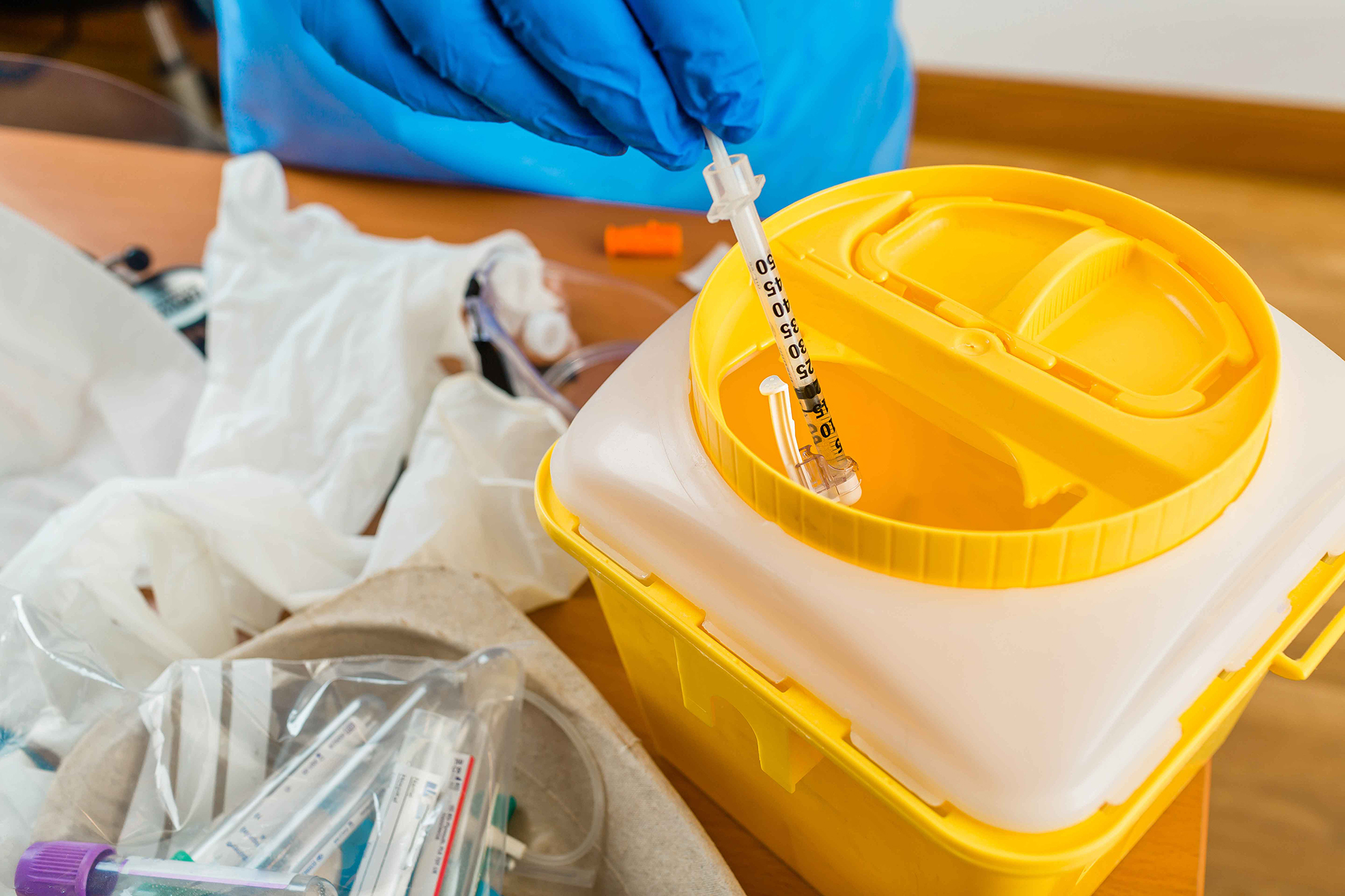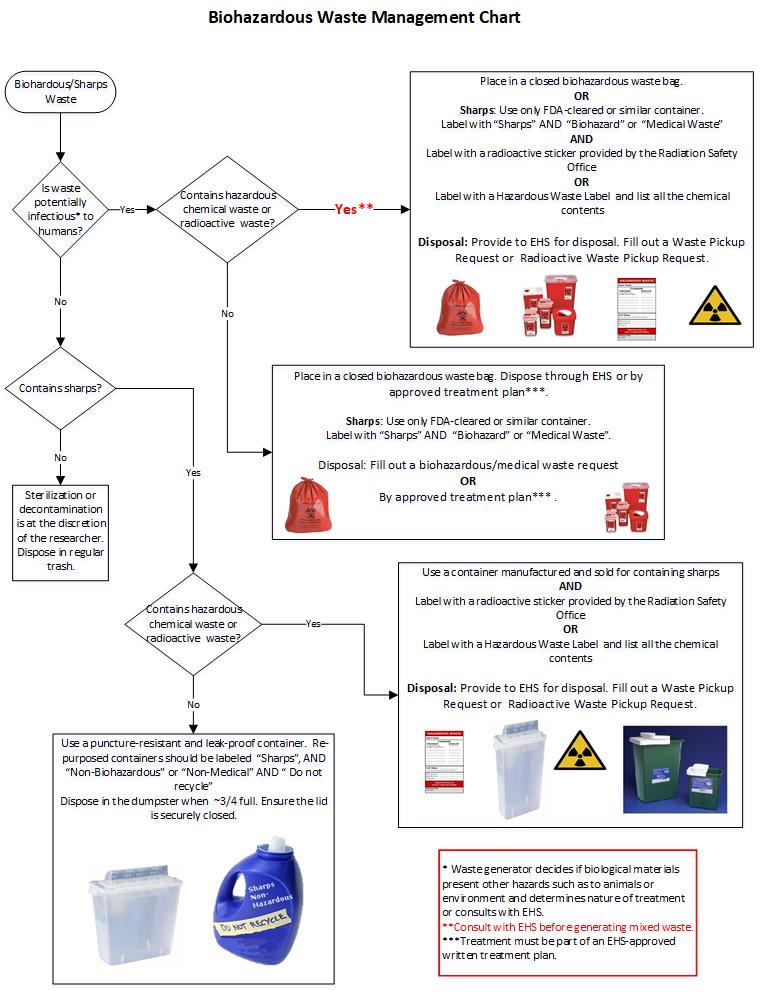Tailored Medical Waste Disposal Service: Fulfilling Medical Care Conformity Specifications
Wiki Article
Ideal Practices for Medical Waste Management
Clinical waste management is a critical facet of medical care centers' procedures to make certain the security of clients, personnel, and the setting. Applying ideal practices in medical waste monitoring is essential to lessen the risks linked with dangerous waste.
Partition and Classification
In the area of medical waste management, proper partition and classification are necessary practices for guaranteeing the secure and efficient disposal of healthcare-related materials. Medical waste is produced from different sources, consisting of medical facilities, centers, research laboratories, and various other healthcare centers. It consists of a variety of products, such as needles, syringes, bandages, gloves, and pharmaceutical waste.Segregation involves the methodical separation of different kinds of clinical waste based on their attributes and prospective dangers. Sharps waste, such as blades and needles, must be placed in puncture-resistant containers to avoid injuries and the spread of transmittable diseases.
Categorization is the process of categorizing clinical waste right into different categories based on its prospective threats. These categories might consist of infectious waste, unsafe waste, pharmaceutical waste, and general waste. By categorizing waste, healthcare facilities can figure out the suitable disposal techniques and make sure conformity with regional policies and standards.
Appropriate segregation and categorization of medical waste not only shield the health and wellness of medical care workers and the public however additionally add to the total effectiveness and performance of waste administration. It decreases the risk of mishaps, minimizes ecological influences, and advertises liable waste disposal practices.
Proper Storage and Identifying
To make sure the reliable and secure disposal of medical waste, healthcare facilities have to abide by correct storage and labeling practices. WasteX Medical Waste Disposal. Proper storage and labeling play an essential duty in preserving the integrity of medical waste monitoring systems and shielding the health and wellness of healthcare workers, clients, and the basic publicWhen it concerns storage space, it is necessary to have assigned locations particularly developed for various sorts of medical waste. These locations should be safe, well-ventilated, and geared up with appropriate containers that satisfy regulatory requirements (medical waste disposal service). Segregation and classification of waste need to also be taken into consideration to prevent cross-contamination and potential dangers

Routine monitoring and inspection of storage space areas and containers are vital to recognize any type of concerns or infractions. Staff ought to be trained on appropriate storage space and labeling methods, highlighting the relevance of compliance with methods and policies.
Safe Transportation and Handling
Making certain the correct and protected transportation and handling of clinical waste is critical for maintaining the honesty of waste administration systems and protecting the health and wellness and safety and security of all included. Clinical waste, that includes products polluted with infectious products, drugs, and various other harmful compounds, should be transported in a fashion that stops leaks, spills, and potential contamination.To attain safe transport and handling, several best methods must be complied with. It is important to use puncture-resistant and leak-proof containers that are specifically designed for medical waste. These containers should be appropriately secured and classified to stop any type of accidental direct exposure or mishandling. Additionally, waste should be segregated based on its nature and kind to avoid cross-contamination.
During transport, it is necessary to guarantee that waste containers are safely fastened and kept in a stable way. Autos used for delivering medical waste should be equipped with suitable safety functions, such as spill control systems, to reduce the threat of any type of spills or leakages. Drivers ought to get training on appropriate handling and emergency reaction treatments to successfully address any type of unexpected cases.
Moreover, the transport and handling of clinical waste should comply with all appropriate policies and standards stated by neighborhood, state, and government authorities. WasteX Medical Waste Disposal. medical waste removal. Routine evaluations and audits should be carried out to evaluate conformity and identify any kind of locations for enhancement
Compliance With Regulatory Standards
Preserving compliance with regulatory standards is necessary for efficient medical waste management. These standards view it now are put in area to secure public health and wellness and the atmosphere by guaranteeing that clinical waste is correctly taken care of, dealt with, and disposed of. Compliance with regulative standards helps to avoid the spread of contagious diseases, minimize possible risks, and decrease the overall effect of clinical waste on the environment.To accomplish conformity, health care facilities need to remain educated about the details policies controling medical waste administration in their territory. These policies may vary from nation to nation, and even within various states or areas. It is very important for health care centers to have a thorough understanding of these guidelines and to execute proper approaches and protocols to make sure conformity.
One trick facet of conformity is the appropriate partition and labeling of various kinds of clinical waste. This includes separating sharps from other waste, in addition to classifying waste based on its possible threats. Healthcare facilities must likewise ensure that medical waste is kept in ideal containers and that these containers are effectively labeled and secured.
Furthermore, compliance with regulative guidelines requires healthcare facilities to establish proper training and education and learning programs for employee associated with medical waste monitoring. This includes offering training on waste partition, handling, and disposal treatments, as well as the correct use personal protective devices.
Regular tracking and audits are also important to make certain continuous compliance with regulatory standards. This involves carrying out regular evaluations of waste storage locations, recording waste administration treatments, and maintaining records of waste disposal.
Reliable Disposal Methods
Healthcare centers must utilize effective disposal methods for correct monitoring of clinical waste. Inappropriate disposal of clinical waste can pose serious health and wellness and ecological dangers. There are several techniques that can be used to properly get rid of medical waste, making sure the safety and security of health care employees, individuals, and the public.One generally made use of method is incineration. Incinerators can securely shed medical waste at high temperature levels, minimizing the quantity and damaging any type of possibly hazardous microorganisms. Incineration can be pricey and may release harmful pollutants into the air if not correctly controlled.
Another technique is autoclaving, which involves subjecting the waste to high-pressure vapor. This procedure eliminates microorganisms, viruses, and various other bacteria, making the waste secure for disposal in routine waste streams. Autoclaving is a ecologically pleasant and efficient technique, but it requires specific devices and trained workers.
Chemical sanitation is likewise utilized in many cases, where fluid chemicals are applied to the waste to decontaminate it. This method is less frequently utilized because of problems concerning the efficiency of chemical sanitation and the capacity for chemical deposits to pollute the setting.
Along with these techniques, medical care centers must additionally apply correct partition, product packaging, and labeling of medical waste to ensure its risk-free handling and disposal. Routine training and education and learning of team on correct waste monitoring techniques are essential to preserving reliable disposal techniques.
Final Thought
To conclude, executing best practices for clinical waste monitoring is important for guaranteeing the safety of medical care workers, patients, and the setting. By effectively setting apart and categorizing waste, saving and classifying it properly, making certain safe transport and handling, abiding by regulative guidelines, and employing effective disposal techniques, healthcare centers can properly take care of and reduce the dangers connected with medical waste. It is critical for health care companies to focus on and adhere to these best practices to maintain a lasting and safe health care atmosphere.Medical waste management is a vital aspect of healthcare facilities' procedures to ensure the safety of patients, team, and the atmosphere. Implementing finest techniques in medical waste management is vital to minimize the dangers connected with harmful waste. These classifications might consist of contagious waste, unsafe waste, pharmaceutical waste, and basic waste.In final thought, executing ideal techniques for clinical waste administration is necessary for guaranteeing the safety of healthcare workers, individuals, and the setting. By correctly setting apart and classifying waste, storing and identifying it properly, making sure safe transport and handling, complying with regulatory guidelines, and employing effective disposal techniques, medical care centers can effectively handle and minimize the dangers connected with clinical waste.
Report this wiki page